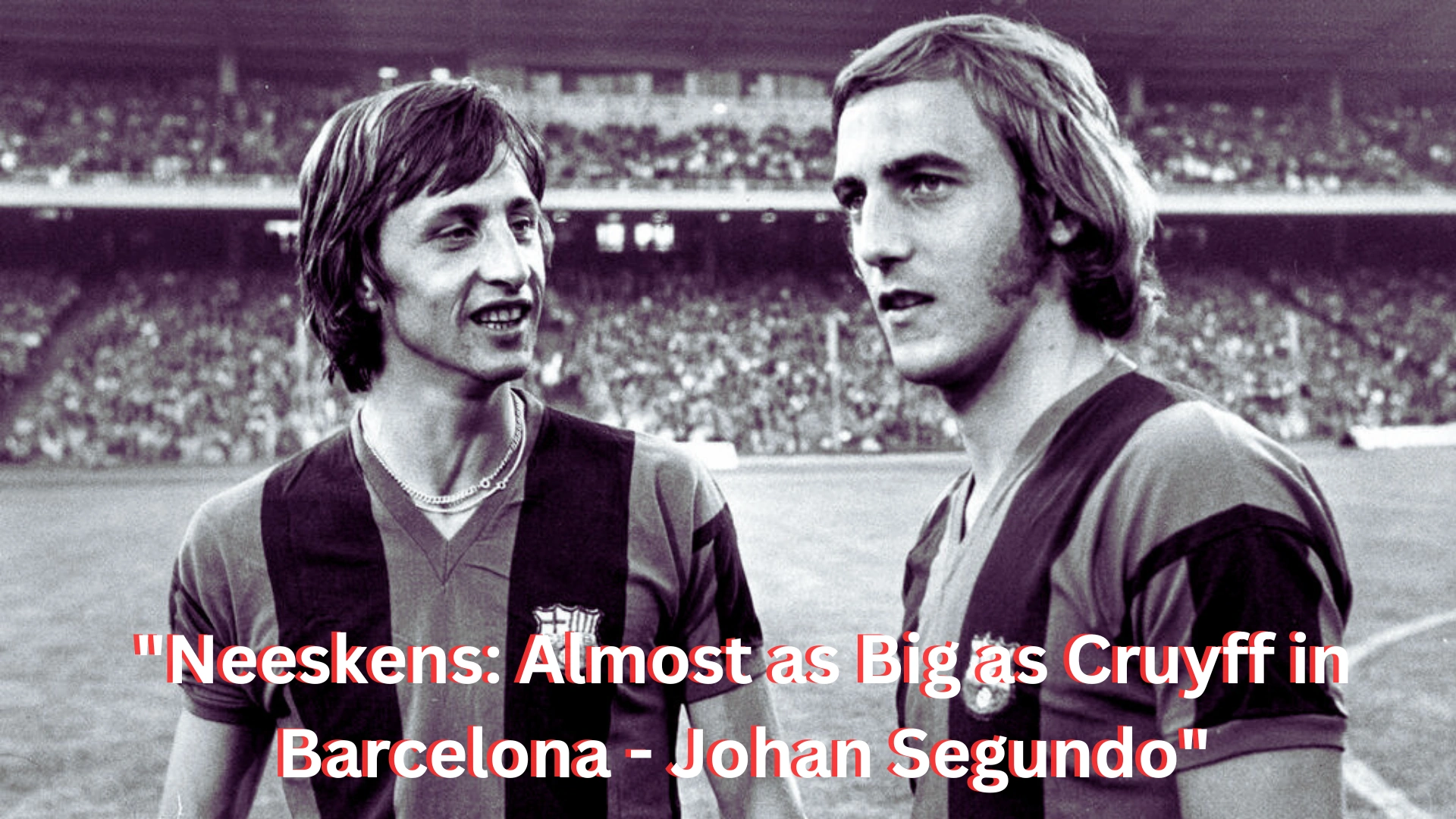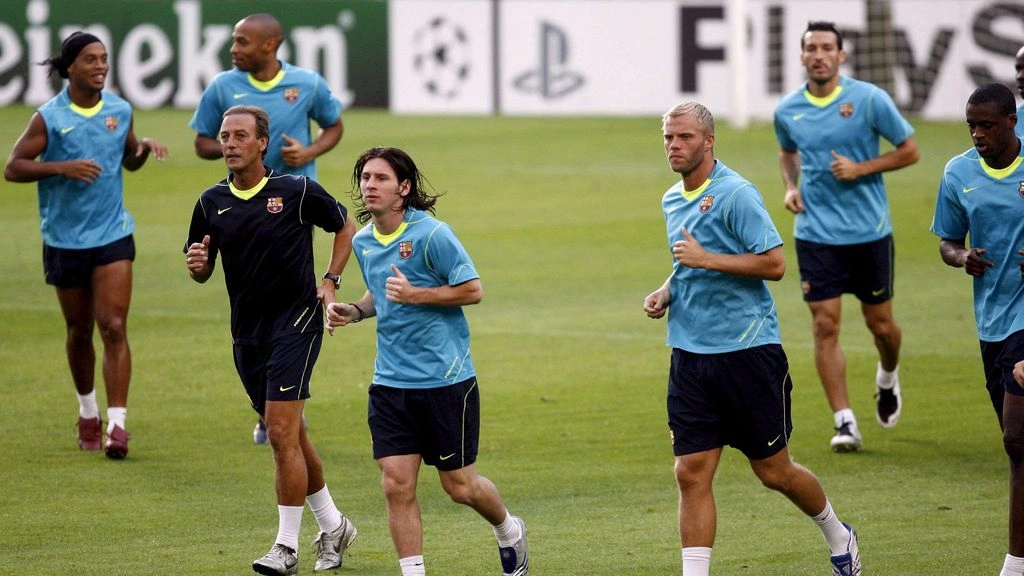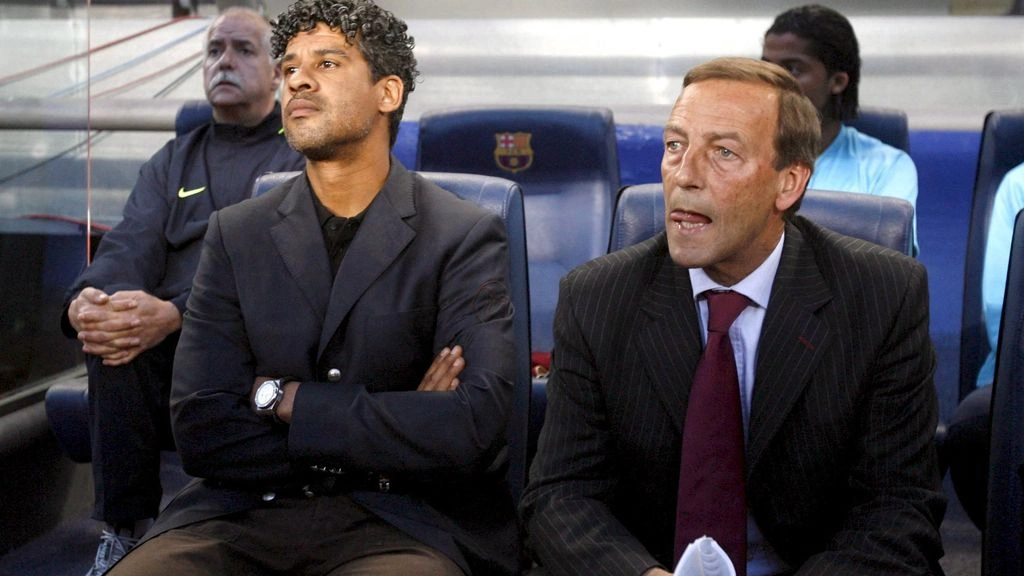“Neeskens: Almost as Big as Cruyff in Barcelona – Johan Segundo”
“Neeskens, Neeskens, Neeskens!”
Johan Neeskens cried big tears on the balcony of the city hall of Barcelona in 1979. The Catalan football club had won a European cup for the first time, with Neeskens as an energetic fighter in midfield, but ‘El Torero’ knew he had to leave. Neeskens was inconsolable, while the Catalans chanted his name at the tribute.
Barça fans recognized Catalan tenacity in the heroic playing style of the Heemstede native and took Neeskens into their hearts. In Barcelona, Neeskens, who died on Sunday, also known as ‘Johan Segundo’, was perhaps even bigger than Johan Cruijff.
The Catalans dreamed of being able to tackle just like ‘De Nees’ or melted at the sight of the fluttering blonde hair and bright blue eyes. But Neeskens had nothing to do with the spotlight. He was the loyal adjutant of his buddy Cruijff at Ajax, just like in the Dutch national team, and also acted as a bodyguard for his namesake on the Spanish fields.
“Everyone was talking about Cruijff, but in the same breath also about Neeskens, the second Johan”, said expert on Spanish football Edwin Winkels in the Sportforum of Langs de Lijn & Omstreken. “I even think that he became more popular than Cruijff because of his dedication and fighting.”
Not a poster boy
“Neeskens was a handsome boy, with that long hair, no footballer had long hair in Spain. The women always talked about Neeskens. He often had white ankle bracelets around his socks, that also highlighted him even more.”
Neeskens never wanted to be a poster boy, for him football was mainly about survival, fighting and hoeing. As a young dog he constantly chased opponents, everywhere on the field after the ball. Images of the confrontation with Feyenoord and Willem van Hanegem made an impression.
“Spanish football was used to fierce defenders, but someone from Ajax who came to fight for Barcelona like that, that was something”, says Winkels. Cruijff was sometimes invisible in the Spanish ferocity, Neeskens flourished in that fighting football of the seventies. “That dedication in particular did his popularity a lot.”
Spanish footballer of the year
Yet Neeskens was much more than a hoe. At Ajax, where he had won three European Cups I in a row, and later at Barcelona, he showed that his right foot had a lot of feeling. In 1976 he was named footballer of the year in Spain.
“Rinus Michels did not bring Neeskens to Barcelona for nothing”, emphasises Winkels. And that while Barcelona was only allowed to have two foreign players in the selection at the time. The choice had fallen on the two Johans.
That arrangement was precisely the reason for the tears at the 1979 celebration. After winning the European Cup II it was already clear that Barcelona had chosen another foreigner. Cruijff had already left for the United States in 1978. A year later, there was no place for Neeskens either.
“The Catalans shouted ‘Neeskens, Neeskens'”, according to Winkels. “He just bent over, he couldn’t do anything anymore. He just stood there crying on the balcony.”
The love between Camp Nou and Neeskens was mutual. “Because of the entourage, I played every match there with goose bumps on my body”, said Neeskens.
Back as assistant
He left in 1979 and returned to Barcelona 27 years later, as assistant coach at the side of Frank Rijkaard. Together, the duo built on the tiki-taka foundation that Cruijff had laid as coach in Barcelona in the nineties.
Neeskens took care of Xavi, Andres Iniesta, Ronaldinho and a very young Lionel Messi, among others.
On Monday, after Neeskens’ death, a shadow also fell over Camp Nou. Chairman Joan Laporta, who was also chairman of the club when Neeskens was assistant, praised the Dutchman.
“He always gave everything and knew how to deeply touch all the fans. He was the epitome of the Barça feeling. It was a period in which the club’s identity took shape and that is thanks to players like Neeskens.”
Johan neeskens sick
Johan Neeskens, sadly, passed away recently. He was a notable player known for his contributions to the Dutch national team, including the famous 1974 World Cup squad led by Johan Cruyff.
Willem van Hanegem and Guus Hiddink are also prominent figures in Dutch football history, with Hiddink having coached the national team at different times. Ronald Koeman has also played a significant role both as a player and as a coach for the Dutch national team.
The KNVB refers to the Royal Dutch Football Association, which governs football in the Netherlands.
CONCLUSION:
Johan Neeskens’ life and career offer profound moral lessons that go beyond the football field. Here are a few conclusions we can draw from his journey:
1. Dedication and Hard Work Outshine Talent Alone
Neeskens, despite playing alongside legends like Johan Cruijff, was revered not only for his skill but for his tireless work ethic. His story shows that perseverance, dedication, and relentless effort can earn more admiration than talent alone. Success is often built on hard work and a willingness to do the difficult, unnoticed tasks.
2. Humility in Greatness
Even as one of the greatest midfielders of his time, Neeskens was never interested in the spotlight. He served as a loyal teammate and never sought personal glory. His humility, despite being a star, reminds us that true greatness is not about seeking fame but about contributing selflessly to the team and the people around you.
3. Loyalty and Commitment Build Deep Connections
Neeskens’ bond with the Barcelona fans illustrates the power of loyalty and commitment. His unwavering dedication to the club, even in tough times, earned him a lasting place in their hearts. This highlights how loyalty—whether to people, organizations, or values—creates deep, meaningful relationships and leaves a lasting legacy.
4. Adaptability and Resilience in Life’s Challenges
Neeskens faced the end of his time at Barcelona with deep emotion, but he didn’t let this setback define his life. He returned years later as a coach and continued to contribute to football. His resilience teaches us to adapt and keep moving forward, even when faced with difficult transitions.
5. Teamwork and Supporting Others Leads to Success
Throughout his career, Neeskens played a crucial supportive role to teammates like Cruijff, showing that success in any endeavor is not achieved alone. His story illustrates that being a strong team player, uplifting others, and working towards a collective goal often lead to the greatest achievements.
In conclusion, Johan Neeskens teaches us that greatness comes from more than skill. It is built on hard work, humility, loyalty, resilience, and teamwork—values that apply not just in sports, but in every aspect of life.
FAQ:
What made Johan Neeskens stand out during his time at Barcelona, and how did he earn the nickname ‘Johan Segundo’?
Johan Neeskens was known for his tenacity, hard work, and dedication on the field, qualities that resonated deeply with the Catalan fans. His relentless midfield play and fighting spirit captured the hearts of the fans in Barcelona, earning him the nickname “Johan Segundo” (Second Johan) as a loyal sidekick to Johan Cruijff.
While Cruijff was the creative genius, Neeskens’ combative style reflected the Catalan character, making him a fan favorite and perhaps even more beloved than Cruijff for his grit and determination.
How did Neeskens’ style of play align with the ethos of the Catalan fans at FC Barcelona?
Neeskens’ playing style was often described as heroic and determined. He embodied the spirit of hard work, never shying away from challenges, which resonated with the identity of the Catalans, who valued tenacity and resilience.
His combative, all-action style of football symbolized their fight for recognition and autonomy, and as a result, Neeskens became a symbol of this mentality on the field. His humility and willingness to do the hard work earned him a deep connection with the fans.
Why was Neeskens’ departure from Barcelona in 1979 so emotional for both him and the fans?
Neeskens’ departure from Barcelona was highly emotional because he had become a central figure at the club, beloved by fans for his passion and dedication. His tearful farewell from the city hall balcony in 1979 was a poignant moment as Barcelona had won the European Cup II, and the fans chanted his name in a show of love and admiration.
However, due to restrictions allowing only two foreign players in the squad, Neeskens had to leave, with the club opting for another player. The mutual respect between Neeskens and the fans made the farewell all the more emotional.
How did Johan Neeskens continue to contribute to Barcelona after his playing career ended?
After his playing days, Johan Neeskens returned to Barcelona in 2006 as an assistant coach under Frank Rijkaard. In this role, he played a significant part in nurturing a new generation of talent, including future stars like Xavi, Iniesta, Ronaldinho, and Lionel Messi.
His influence extended beyond tactics, as he helped instill a strong work ethic and team spirit, which was central to Barcelona’s tiki-taka style of play that defined the club’s identity during that era.
What was Johan Neeskens’ lasting legacy in football, both in the Netherlands and internationally?
Johan Neeskens’ legacy in football is immense. Internationally, he is best remembered as a vital member of the Dutch national team that reached the finals of the 1974 World Cup, where his energy, commitment, and powerful performances in midfield became iconic.
Domestically, he is cherished in the Netherlands for his contributions to the golden era of Ajax, where he won three consecutive European Cups. At Barcelona, his legacy is one of unyielding passion and dedication, qualities that endeared him to fans and made him a lasting symbol of the club’s fighting spirit.



Amazing information about this, it’s a really good job.
Simply wish to say your article is as amazing. The clearness to your post is simply excellent and i could think you are knowledgeable on this subject. Well along with your permission allow me to take hold of your RSS feed to keep up to date with coming near near post. Thank you one million and please continue the enjoyable work.